Germán Valdés: radio, Tin Tan, and the movies
Germán Genaro Cipriano Gómez Valdés y Castillo, much better known as "Tin Tan", is currently recognized as one of the most important figures of the Golden Age of Mexican cinema. Germán worked in more than 100 films, in all of them he always stood out as an actor with skill as a dancer.
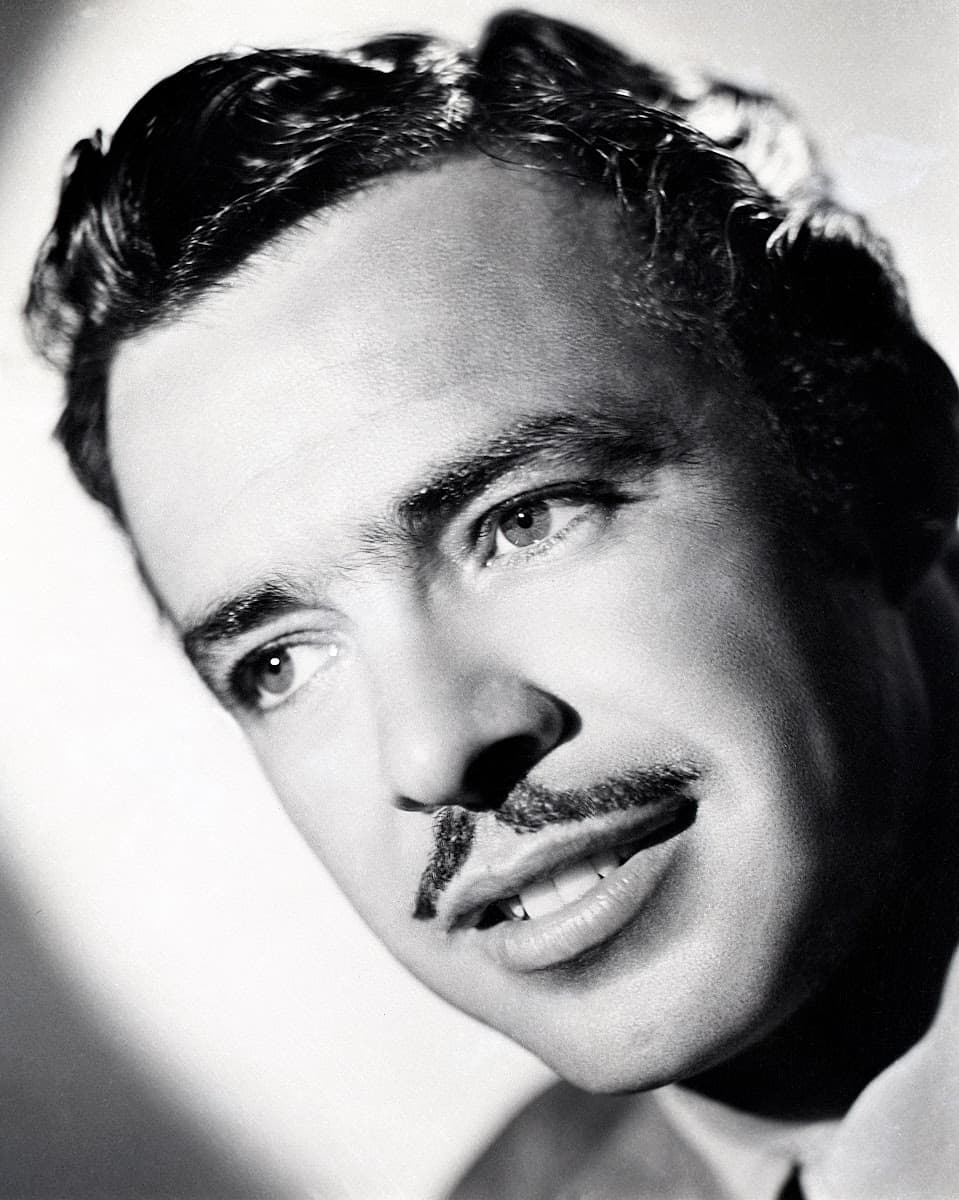
In the history of radio broadcasting in Mexico, many chapters invariably lead to the cinema. As a matter of principle, many of the great singers who starred at the beginning of the golden age of commercial radio broadcasting in Mexico were later great figures in the "golden age" of Mexican cinema. Those who made the transition to the movies were not only great singers, comedians, or storytellers who performed on the radio. The products of their creativity -the programs- gave rise to films.
An example of this was the fact that around 1940 the great popularity of the radio series El monje loco, written by Carlos Riveroll and starring Salvador Carrasco, gave rise to a series of short films with the same title and performer, directed by Alejandro Galindo: La herencia negra, El horrible caso de las manos cortadas, La gárgola humana, El cristo justiciero, El pacto con el demonio and La reencarnación de Vilma (or Elma) Bordoni.
In a somewhat similar situation, it is difficult to know if the first film starring Germán Valdés "Tin Tan", entitled El que la traga la paga (Paco Miller, 1943) was also conceived to be screened as an accompaniment to feature films, as was the case with the shorts of El monje loco. But the case of Tin Tan was another of the many examples of a talent born and bred on the radio, which jumped to the movies and ended up in the pages of the history of both media.
It could perhaps be thought that in Tin Tan's existence as a comedian, first in radio and later in the film, there are lines of continuity that connect him with the rogue of José Joaquín Fernández de Lizardi, in El Periquillo Sarniento. Perhaps they even relate him at least a little to the comedians of the most recent Mexican cinema, even though the latter is of an overwhelming vulgarity that does not favor them in any way, but it does enhance Tin Tan more and more.

Born in the capital, born in Juarez by migration, and initially a professional pachuco by adoption or by his own decision, Tin Tan based his first comic displays on the linguistic turns of that character: the pachuco, which with "Spanglish", was likely to be better appreciated on the radio. It is a comedy based on the orality of the deformed linguistic expression, in which the tones, nuances, and inflections of such a peculiar speech, typical of the pochos, the Chicanos, the Tex-Mex, etc., found then the best way to show off on the airwaves.
It is worth remembering that in his beginnings Tin Tan thought of being a "serious" singer because he had a well-toned voice, well timbered, moderately educated, and susceptible to being well appreciated, as long as it was only his voice that was manifested in front of the audience. For as soon as the singer's image was in sight, the charm was broken, and everything was prone to laughter. Fortunately, Tin Tan didn't have the "posture", the "gummed up" appearance of the singers of the time in which he ventured into radio (for example Emilio Tuero). But instead, he had a corporal expressiveness, a gesturality of facial expressions that tended to the dislocation of the eyes, the swelling of the nostrils, the "swell" of the lips that invariably showed prominent teeth, considered typical of the "trompudo", the Mexican rogue of the slum. All of this could easily get a laugh out of an audience that in his deformed speech and his "visages" found the door to hilarity. At a time when audiences lined up in long lines to "see" the great radio stars in the studios where the programs were made and broadcast, Tin Tan's fate was sealed. The project of announcer and singer was definitively transformed into a comic actor.
Having debuted on XEJ in Ciudad Juárez in 1932, Tin Tan showed immediate signs that he was excellently gifted for imitation, parody, and irrepressible relaxation. His first radio program, Tin Tan Larará, arose precisely from an incidental imitation he did of the future superstar of XEW's Estudio Azul y Oro: Agustín Lara. Furthermore, he not only imitated the "flaco de oro", but also intentionally deformed the lyrics of his songs, and spliced that deforming ability of personalities, characters, and songs, with those of the rogue who resorts to all kinds of tricks to survive. That is why another of his first names as a comedian was that of Topillo Tapas since "topillo" is a trap and "topillero" is a cheat.
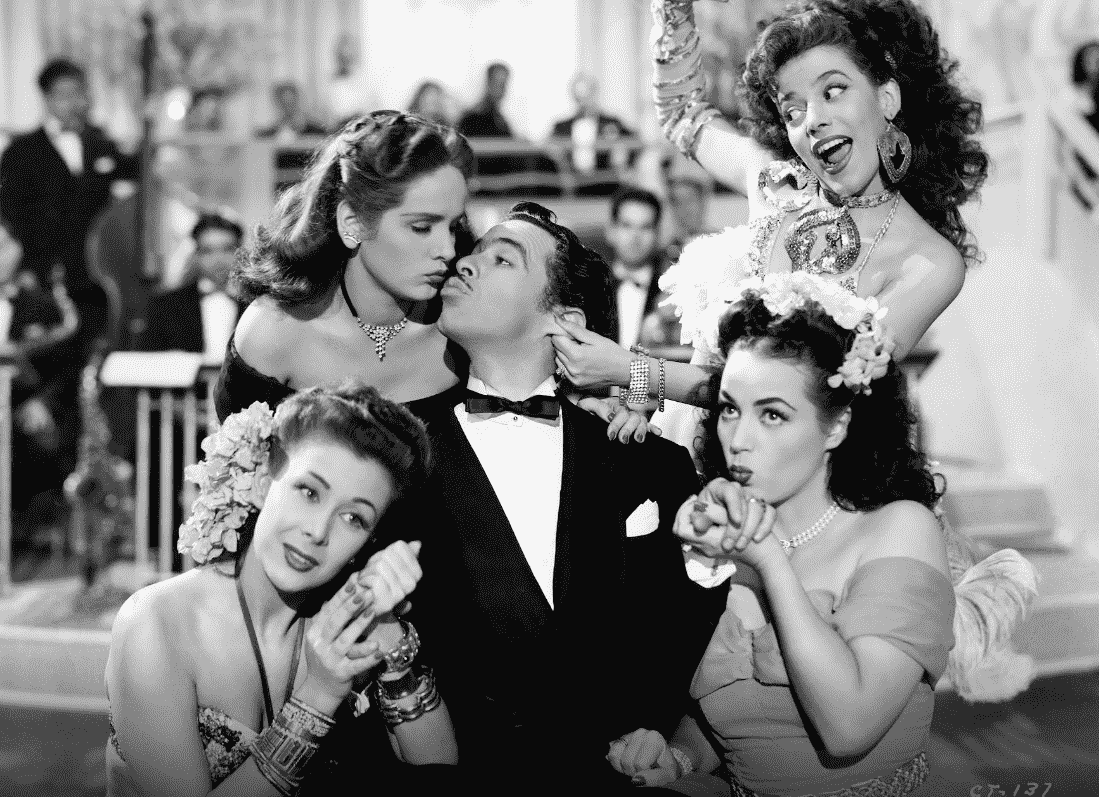
Although it is often believed that "topillo" and "topillero" are terms from the slang of the pachucos, the reality is that these words and their meaning had a wider and older presence. Recall, for example, that in La sombra del caudillo (1960), Julio Bracho recovered a song popular in the revue theater of the 1920s. The chorus girls, in allusion to possible electoral fraud, sang: "¡Ay Caudillo, no le pongas a la gente un topillo... Respeta el voto popular..." (Oh Caudillo, don't put a mole on the people... Respect the popular vote...).
With programs such as El barco de la ilusión, and with the character of "El Pachuco Topillo", Germán Valdés was a radio pachuco. Until Paco Miller transformed him into a pachuco also by appearance, by wardrobe and thus opened the door to the stages, theaters, and luxury salons, where he was discovered by René Cardona to finally join the cinema. The possibility of transcending in radio, for example with the Bocadillos de buen humor that he performed in "the cathedral of radio in Mexico", the XEW, was replaced by the enormous transcendence that Tin Tan achieved in the cinema, shortly after his film debut.
Starting with films such as Hotel de verano (René Cardona, 1943), the few more than ten years of radio and theater experience paid off in the movies. The silver screen becomes the privileged space for all of Tin Tan's displays as a comedian, with parody, and with his undeniable dancing skills. Swing, boogie-woogie, mambo, rumba, chachachá, soul, jazz, etc., give way to unbridled expressiveness, for the manifestation of a character that existed as a social reality: the pachuco, which with the cinema becomes a socio-cultural phenomenon, and in addition, playful, joyful and finally very popular.
As time went by, Tin Tan would also become a prodigy of cinematographic transvestism. Sinuously appealing to the hidden homophobia of Mexican machismo, his writers and screenwriters put him in situations in which Tin Tan appears transfigured into a feminized caricature of some of his characters. Dancing as "isleña" in La isla de las mujeres, as Countess Hortensia "del Buen Tallarín" in Con la música por dentro (Humberto Gómez Landero, 1943), as La odalisca No. 13 (Fernando Cortés, 1957), or directly with the titles of his films, such as El violetero, El ceniciento, El bello durmiente, etc., Tin Tan manages to transcend the crude and disqualifying caricature. He reached heights of splendor and talent rarely seen in Mexican film comedians.
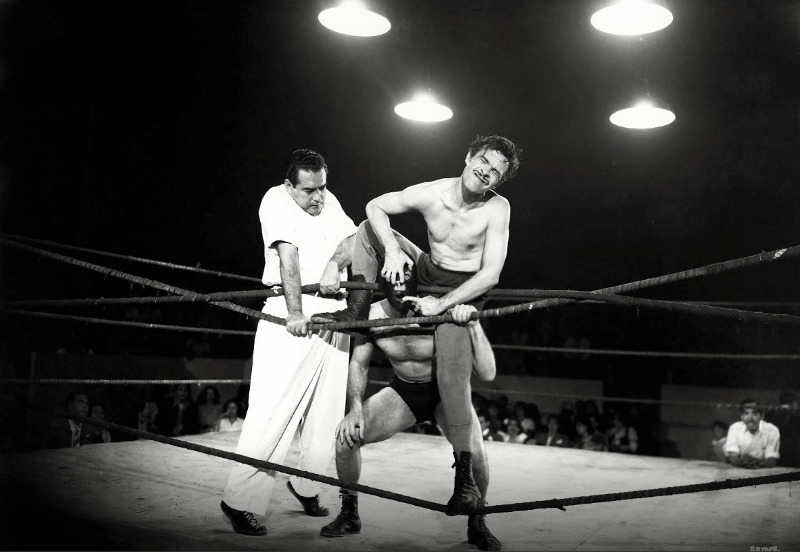
His interpretations of "el niño de pecho" in El rey del barrio (Gilberto Martínez Solares, 1949); his transfigurations in Tres lecciones de amor (Fernando Cortés, 1958), which seemed a distant parodic remembrance of Monsieur Beaucaire (Sidney Olcott, 1924, starring Rudolph Valentino); or the sardonic allusions to films in vogue, such as La condesa descalza (The Barefoot Contessa) (Joseph L. Mankiewicz, 1954), which may have influenced the shooting of El sultán descalzo (Gilberto Martínez Solares, 1954), made Tin Tan the superstar of Mexican film comedy in the fifties, as much as Cantinflas had been in the film comedy of the forties.
Tin Tan, to put it simply, managed to reinvent himself from what could have been a brilliant announcer, singer, comedian, and imitator on the radio, to become a great comedian in the movies. The uncontrolled mobility of his body, the nonsensical speech, the "champurrado" Spanish with "pachuco" English terms, accompanied by interjections, onomatopoeias, singing, shouting, gesticulations, dances, etc., made him a different and unique comedian. With all these elements of peculiar kinesics, and with all his paralinguistic resources, Tin Tan was the antithesis of the pathos of a "Charlot" that later seemed to be recovered by Cantinflas. And he was the cinematic reality of a radiophonic pachuco gradually turned into a city rogue (through the action of Gilberto Martínez Solares). Thus, it reached a privileged place in the movie memory of all of us who today are his passionate followers.
The musical family of Tin Tan
Opera was a subject that Tin Tan liked to satirize. Unforgettable is the lyrical scenes that together with Fannie Kauffman, better known as Vitola, he starred in the films El rey del barrio and Los líos de Barba Azul, where they performed the waltz Voces de primavera and the arias Sempre libera from La Traviata (which ended with a rumbustious mambo) and Caro Nome from the opera Rigoletto, the latter to a "foxtrot" rhythm. Interestingly, the family of his wife, Rosalía Julián, took music very seriously, so seriously that his brother-in-law Julio Julián would live singing as a tenor in several cities in Europe, and currently Conchita Julián -his daughter- sings as a soloist for the National Coordination of Music and Opera in Mexico.
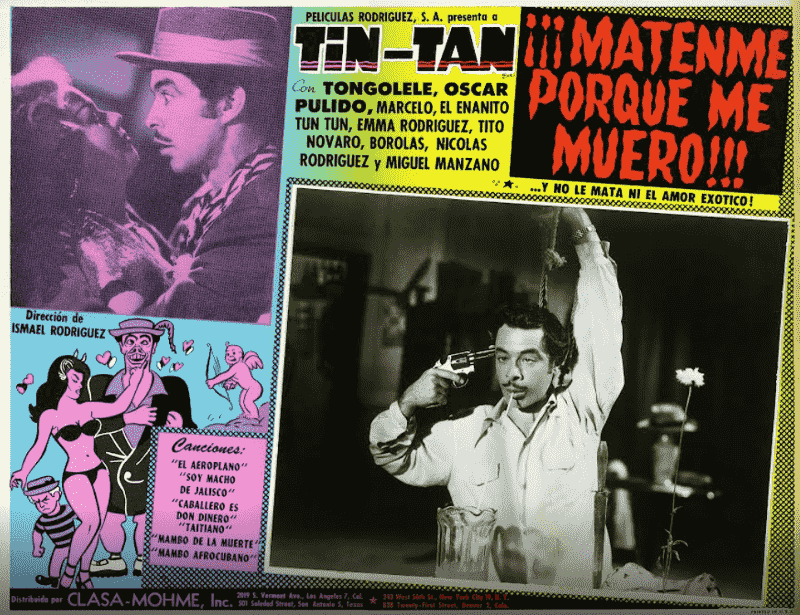
Rosalía Julián along with her sisters, Elena and Araceli (who was the wife of Ramón Valdés, Tin Tan's brother) formed the trio Las hermanas Julián, which in its beginnings accompanied themselves on guitars. They started very young and went on to participate in films such as El desalmado, Cartas marcadas, and Tiempo de melodía (the latter by Disney). Tin Tan sings a song with Rosalía in El Vizconde de Montecristo and apparently, this is where love was born. Later they married, this being Tin Tan's third marriage. From this marriage was born Rosalía Valdés who made a career as a singer and actress; she participated in the films Tintansón Crusoe and El capitán Mantarraya, she also acted in soap operas and was awarded for her performance in the film El vuelo de la cigüeña. She recently wrote a memoir about her father. She is currently retired from acting.
Rosalía Valdés filed a lawsuit against the Disney Company seeking royalties on Tin Tan's dubbing of the films The Jungle Book (1967), The Aristocats (1970), and Katrina and the Two Rivals (1949). She won the lawsuit and currently enjoys those royalties. Several artists have sued Disney for this reason, including Guadalupe Pérez Arias, the soprano who dubbed Sleeping Beauty and Snow White. In this case, Disney re-recorded the dubbings with untrained voice students to avoid further royalties; no one other than Rosalía Valdés has been able to receive royalties. Tin Tan's name is so big that Disney did not want to be seen as a company that does not respect the rights of artists, although, in the case of little-known singers, it has not paid them their royalties.
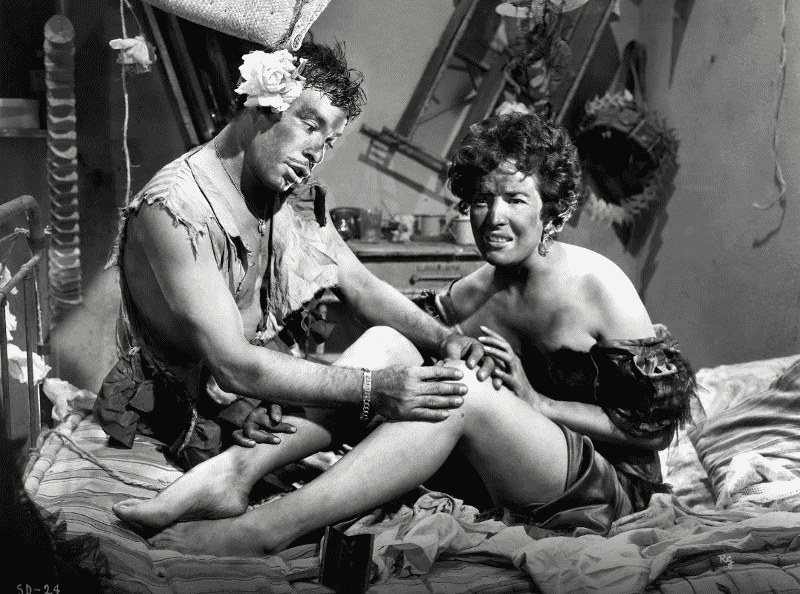
Julio Julián was a student of Fanny Anitúa, he made his debut singing in the opera Cavallería Rusticana by Pietro Mascagni. He participated in radio and television programs singing, and finally went to Spain where he married a soprano with whom he had three children. His interpretation of Charles Gounod's opera Faust is famous, especially the aria Salut demeure chaste pure, which is still cited as an example of a beautiful and delicate voice among tenors. Conchita Julián -his daughter-, learned singing from her father and later entered the Escuela Superior de Música in Madrid under the tutelage of Ana Higueras. She has sung at the Cincinnati Opera and in the city of Neuss, as well as at the Zenith Theater in Paris. She is currently an outstanding soloist and voice teacher.
Tin Tan lived between these two worlds, the world of operatic singing and the world of neighborhood music. He took the best of both and gave us his creation. His musical numbers were well-integrated and with his peculiar talent, he managed to make an Italian opera aria end with a mambo. We enjoy this audacity now with laughter, but the truth is that he invented musical fusion or "crossover", whatever you want to call it. Now that opera singers perform their concerts on large stages in front of thousands of spectators, fusing the melodies of operas with other musical styles, we cannot help but smile when we remember Tin Tan and the unforgettable Vitola...
By: Francisco Peredo and Luz Angélica Uribe, Source: Radio UNAM
Dr. Francisco Peredo holds a B.A. in Communication Sciences (UNAM), M.A. in Comparative History (University of Essex, Great Britain), Ph.D. in History (UNAM), and postdoctoral studies in Cultural Analysis (the University of Amsterdam, The Netherlands).




